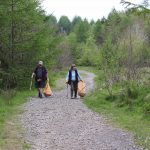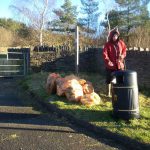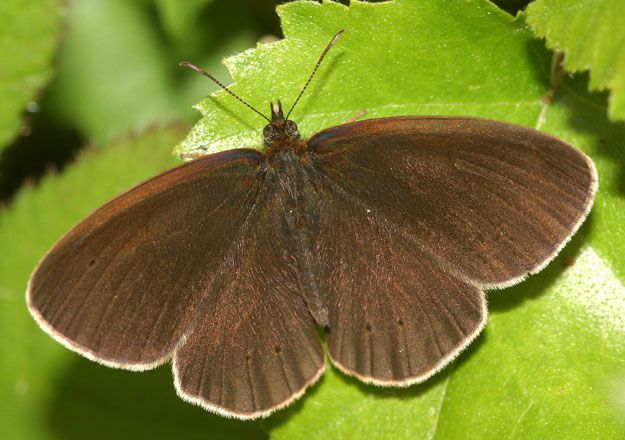- info@sirhowyhillwoodlands.co.uk
- Thomas Ellis Way, Tredegar NP22 4QF
- About Us
- Get involved
- Visit Us
Visit Tredegar & our Woodlands
Come and visit us!
Sirhowy Hill Woodland
Thomas Ellis Way
Tredegar
Blaenau Gwent
NP22 4QF - Wildlife
- Woodland Shop
Latest and greatest products, direct from our
Woodland Shop
Sourced from the Woodlands and the local community.
You have
item(s) in your bag
- Home
- /
- Blog
- /
- Animals & Wildlife
- /
- Butterflies
- /
- Ringlet

Scientific name: Aphantopus hyperantus
Ringlet
Underwing has distinctive eyespots: white centre, black inner ring and outer yellow ring.
When newly emerged, the Ringlet has a velvety appearance and is almost black, with a white fringe to the wings. The small circles on the underwings, which give the butterfly its name, vary in number and size and may be enlarged and elongated or reduced to small white spots; occasionally they lack the black ring. They are a dark brown butterfly and similar to male Meadow Brown
Bramble and Wild Privet flowers are favourite nectar sources, and adults continue to fly with a characteristic bobbing flight in dull, cloudy conditions when most other butterflies are inactive.
This widespread butterfly has extended it range in England and Scotland in recent years. Widespread on damp grassland throughout Britain and Ireland.
What does the Ringlet eat?
The Ringlet eats coarser grasses, including Cock’s-foot (Dactylis glomerata), False Brome (Brachypodium sylvaticum), Tufted Hair-grass (Deschampsia cespitosa), Common Couch (Elytrigia repens), and meadow-grasses (Poa spp.). Ringet also eats other species of grass.
What habitat does the Ringlet live in?
The Ringlet lives in woodland rides and glades and damp grassland where grasses are lush and tall (it likes damp situations with partial shade). The butterfly also occurs on commons, verges and riverbanks, especially on clay soils. In Northern areas it is found in more open and less shady habitats.
What family does the Ringlet belong to?
The Ringet belong to the Nymphalidae family.

Click to view more
Statistics
Scientific Name
Aphantopus hyperantus
Location
England, Wales, Scotland and Ireland
Size
Medium sized
Wingspan Range: 48-52mm
Population
Found everywhere apart from northern Scotland. Distribution Trend Since 1970’s: +16%

Other Wildlife







